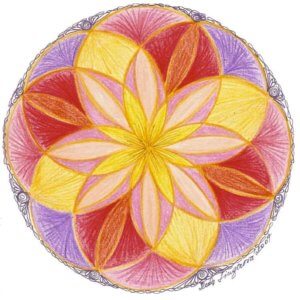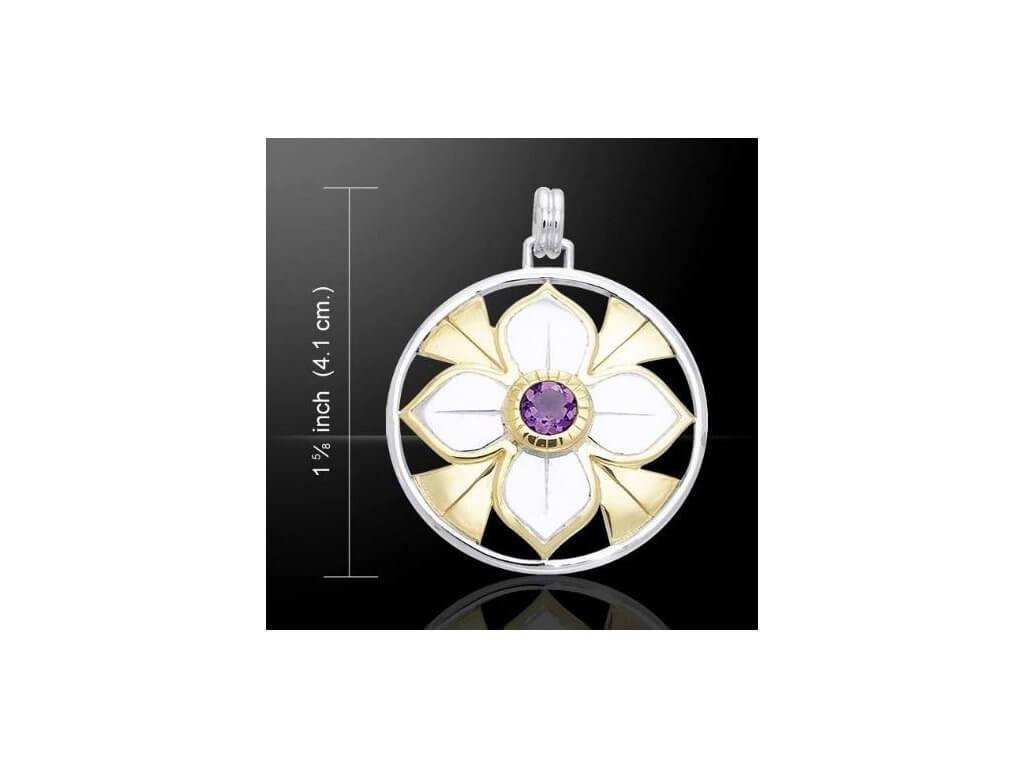
Abaddon
 26. 04. 2024
26. 04. 2024



 12. 03. 2020
12. 03. 2020

Mandala means "circle-center" in Sanskrit (Old Indian). It is older than human history, because it is as old as the universe itself, whose boundaries are impossible to capture, as well as the beginning or end of the circle. The universe itself is a mandala consisting of countless mandalas. Mandalas are individual galaxies, the solar system, our Earth. The building blocks of the oceans are drops, ie mandalas. Lands and mountains are arranged from minerals, their basic building blocks are crystals, ie mandalas. Everything alive consists of cells, and each cell is a mandala. The cell has a nucleus and it is a mandala. Everything on our planet consists of atoms that are mandalas. We see them every day. We throw the stone into the water - circles appear, which are constantly expanding. A daisy in full bloom, a cobweb, a snowflake also form a mandala when we cut an orange in half, see a mandala, etc.
In human history, the mandala is most clearly recorded in the Tibetan tradition. The classical Buddhist mandala consists of concentric circles, squares and other symbols, representing both the image of the world and the human heart and the ideal of human existence as well as the way to achieve life harmony.
Her work was known to many ancient nations such as Greeks, Indians, but let us remember here mainly Tibetans - a nation that excelled in the creation of the mandala and among whose religious ceremonies the mandala still has its place.
Tibetans usually build a mandala from colored sand. Using funnel-shaped tools called chagpur, they spread a colored pattern, usually circular in shape, that is a symbolic representation of the Buddhist image of the universe. Shortly after the mandala is completed after several days of work, it is destroyed as a sign of transience and the eternal cycle of life and death. The sand is swept into a pile and scattered in the wind or thrown into a river. This is difficult behavior for us Europeans. The idea that we create something just to destroy it again after completion seems absurd in contrast to our everyday worries.
We are discussing too much. We do something, and then we wonder why. And often seeking why it is seeking apology for our actions. We have little thought about what will happen, rather remember and discuss what was. And in an effort to reach the essence, we break down anything into so small parts that we can escape the whole. Finally, we see only the details and forget that within the whole everything is related to everything and one without the other does not work.
Mandala expresses man's desire for integrity, for self-realization. In drawings of young children, the circle, the mandala, symbolizes the birth of their identity, where the individual integrates into real space, time and place.
Children approach the mandala immediately and carefree. They like to use strong saturated colors. They don't speculate too much about whether they fit together according to the color circle, they don't care what color means. At the end, they find out if they like the work or not. And next time they paint more and more mandala. If you give 5 children the same mandala, there will be 5 originals at the end.
Painting mandalas will teach us that many ways can be used to reach the goal. Even if someone is doing something different than I do, it doesn't mean it's wrong.
The mandala will teach us to love ourselves while respecting others, including their mistakes, other opinions, actions we disagree with. The mandala teaches us to respect every solution as correct. Especially for children, this is of great importance. Often, we limit children to our opinions so much that they do not learn to have their own opinions. As a result, they are not even able to take responsibility for themselves.
The adult mandala speaks equally. And it also has its undeniable influence - we concentrate better, communicate more easily with ourselves, and become more open to new things. And it tells us a lot about ourselves - how much we are confident in our actions - the use of the same color combinations, the conscious avoidance of colors we do not like, the slave adherence to the pattern or, on the contrary, disregarding its shapes, the choice of similar themes. If we are honest with each other, working on the mandala can help us resolve internal conflicts that we do not yet know about before they even manifest themselves externally.
Through the mandala, we can embark on an ancient sacred path leading to finding ourselves and our wholeness. Sometimes you may experience some uncomfortable emotions or special experiences when working with a mandala in meditation. Don't suppress them, dare to go through them. The result in any case is worth it.
Absolute trust, honesty and sincerity to yourself are very important.
If you have any health problems, whether physical or mental, or want to solve personal problems, let the images of the mandalas interact. Finally, choose the one that appeals to you the most and then the one that you like the least or even repels you.
Let the mandala attract you in every possible way: you can energize the water in a glass placed on the image of the mandala, carry it with you, put it in front of you on your desk, put it under a pillow, etc.
Explore the Mandala that you liked least of all, even more carefully. Let it interact and ask yourself the following questions: What bothers me about this mandala? Does it remind me of something I deny or reject? Attention: confronting the negative content of your subconscious can be intense and painful.
The experience with the effect and power of the mandala is a profound inner experience that is one of the steps on the path of mental growth and personality maturation. And this leads not only to the healing of the body but also to the soul.

Mandala is RING. A shape that does not start anywhere and does not end anywhere. Perfect curve, perfect balance.
Mandala is BASKET. We can go from the center out, or from the outside in. It does not matter. The Mandala guides us, she chooses the way, and we set out on her, guided by her intention.
Mandala is FRIEND. She knows everything about us and loves us anyway ... We can confide in her with all our worries and joys.
and she helps us manage them and get the best out of them. She's with us, whether we're doing well or we're down. She won't leave us.
Mandala is HEALER. It helps to overcome sadness, it can calm the agitated mind and recharge energy when it occurs. He can help overcome the fear of himself. He looks into us and arranges everything in confusion through colors and shapes. It harmonizes as we create it, and works long after completion. We are healing just by looking at her. Space is cleaned by its influence, harmful and unnecessary vibrations disappear, everything under its influence tends to return to its original balance.
Mandala is TEACHER. Through it we discover ourselves. It teaches us to like ourselves as we are. They learn to overcome the fear of change. With her help we change for the better. The change is gradual, non-violent, unobtrusive, but all the more permanent. It proves that the game is the most effective way of learning.
Mandala is OPPORTUNITY. It gives space to show what we have learned to hide with reason. It provides the opportunity to manifest all hidden hopes and desires as well as to shout fears and rage. It is a chance to reconcile your inner and outer world.
Mandala is RETURN. Thanks to her we become a child again. We're playing again. Again, we can discover new and unknown, and experience the excitement and joy instead of fear. It brings us back to the basic values of life.
Mandala is LIBERATOR. It frees us from old useless thoughts. It relieves us of fear. Under her influence we are more open to new possibilities and easier to accept change. With her help we become more tolerant and thus more free.
Mandala is LIFE.
FAMILY SYMBOL, silver jewel with cut amethyst, gold plated.
